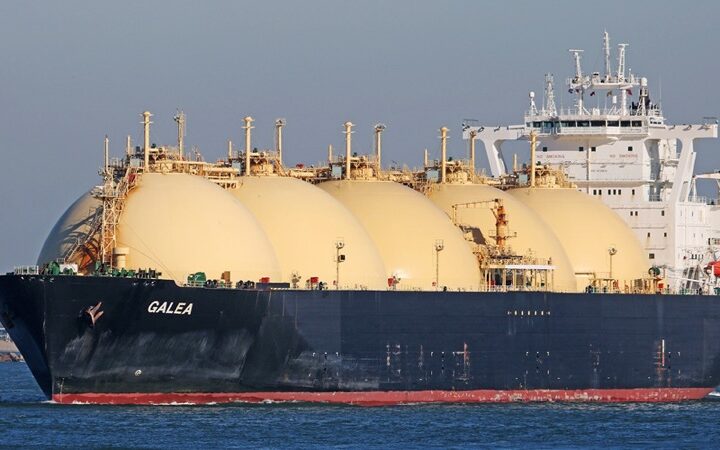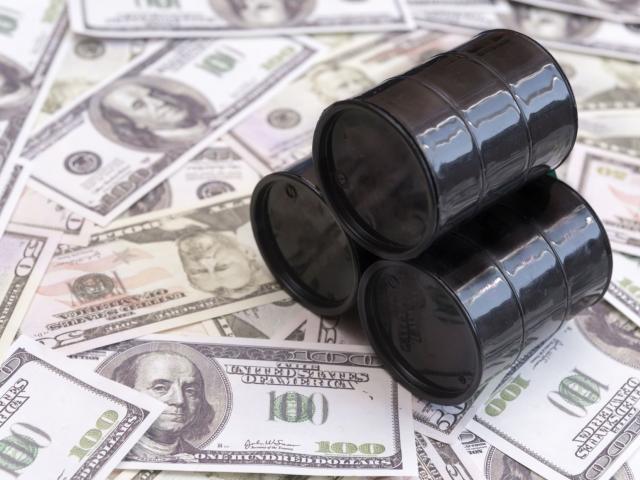.
What are the best options for Cypriot and East Med gas exports?
Taking the best case for the gas price and the lowest possible cost is not a scenario any seasoned investor will accept
 By Adam Lomas, Castor & Partners
By Adam Lomas, Castor & Partners
The discovery of gas and the potential for more discoveries in the eastern Mediterranean bring with them the hope for regional stability and the development of a hydrocarbon infrastructure based in Cyprus which will long outlive the potential benefits of just the Aphrodite field.
However, in order to realise this there is a need for realism and very good strategic planning, and to date this has not been visible.
The recent economic pressures experienced by Cyprus make the delivery of the Cypriot gas even more important, but the economic crisis has also brought with it the difficulties which are likely to be encountered in financing a highly complex and capital intensive project.
But let us be quite clear: on their own, the reserves in the East Mediterranean are not huge. Current estimates of global gas reserves are some 6,600 trln cubic feet, of which Russia accounts for some 1,200 tcf, Qatar 880 and Turkmenistan 620.
A recent report by the U.S. geological survey estimates the reserves in the area at 120 tcf. These are not yet reserves, because they haven’t been “discovered” or proven. Cyprus’ actual reserves are zero, despite the recent drilling of an appraisal well in the Aphrodite field, although estimates place the probable reserves at 5 to 8 tcf.
Close by, Israel has some 26 tcf, including 17 tcf in Levathian which is some 36 miles from Aphrodite. Cyprus on its own may not warrant the building of a massive infrastructure, but the region together can well have the potential for the building and maintaining of an infrastructure together which could outlive the production of any of the hydrocarbons discovered so far.
THE NORTH SEA SUCCESS
In this context I would like to draw attention to the position of Cyprus, placed as it is between the gas producing nations to its south and an energy hungry Europe to the north, as well as to draw a parallel with the North Sea. The governments involved had the strategic foresight to build an energy backbone in the North Sea, which long after the major fields have been produced is still providing revenue to the UK Treasury, through transit tariffs. There are very large amounts of “stranded” gas in Iraq, which were previously planned for evacuation through a war-torn Syria, which could be economically exported through a pipeline to the North. But perhaps I am raising hope and expectation too high to suggest that the countries in the region could be persuaded to discuss the possibilities of the economic benefits which could be achieved if ancient rivalries were put aside.
Let’s look at the steps necessary to monetise the Cyprus gas. Currently the plans for the gas which has been discovered in the Cyprus EEZ are for a single train LNG plant. The economics for such a plant are complex and require looking at a number of variables. In general, there are two ways of selling LNG, one is on fixed-term contracts (which in 2012 accounted for 65% of the world market) and the other is a spot market which is still (relatively) small but has been growing in recent years from 10% in 2000 to some 30% in 2012.
Spot price markets have the potential for higher prices in an upswing market, but the risk of lower returns in a downturn. The majority of spot price gas is sold to Far Eastern markets (mainly Japan and Korea), and the spot price until recently has been high due to a number of factors, including the recent nuclear disaster in Japan. This situation is unlikely to persist, and the likelihood is that the price of gas will drop in the foreseeable future due to the emergence of shale gas as an economic source in the United States which wants to become an exporter in the near future, reducing imports and the coming on line of significant reserves under construction in the Middle East and Australia, both of which are closer to the Far Eastern markets. This does not preclude the possibility that Cyprus gas has economic potential, but a number of factors will need to be carefully managed to ensure that any LNG project is economically viable.
The most important variables in any LNG project are:
– The capital cost of the building,
– The cost of the feed gas,
– The plant utilisation or “uptime”,
– The timeline for project delivery,
– And the fiscal regime.
Although very little has so far been published about the plans for the LNG plant, we are given to understand that Noble is working in close collaboration with the government to produce a strategic plan – which in any case is a pre-requisite for the economic aid which is being provided by the international lenders.
COST OF LNG PLANT
Current estimates have placed the cost of the LNG plant (single train) at 5-6 bln US$. This is in the low range of projects which have been completed anywhere in the world and the current market for capital construction projects is overheated. It is unlikely that any long term contracts would be easily negotiated on the basis of a single train, given the need for maintenance and the possibility of mechanical breakdown. A second train would increase cost and any delay in the project would increase costs further. The break-even sales cost of the gas could quite quickly be overtaken by the cost of an LNG project which was not executed with extreme precision.
The cost of the feed gas will be determined by the cost of development of the Aphrodite field, which have so far not been disclosed publicly by the operator, estimated from 2.0 $ per MMbtu to 4.0 $, but the cost of similar offshore development projects elsewhere has been as high as 6 $ per MMbtu, depending on water depth and geological complexity.
The uptime of the plant is extremely important, and will be dependent on the skill of those operating the plant, whilst the skill of the Cypriot workforce is not in question. The experienced skill base required to run a complex LNG plant is not yet apparent in the country and there is so far little evidence of a structured plan to build that skill base, both of which would be required by an operator wishing to take the risk of building an LNG plant in Vassilikos. The alternative will be that the workforce will be mainly expatriate (which may well be the only alternative in the early stages) which will have knock-on effects on Cypriot employment.
Any project delay will have a significant downside on the economics of the project, and any investor willing to take the large risks involved in delivering a successful LNG project will look to a government and/or National Oil Company for quick decision making, clarity on the legal infrastructure and fiscal regime. The current situation with ongoing re-structuring of the key departments involved in energy distribution in Cyprus and the National Oil Company will not be seen as evidence of the speed required.
ECONOMIC VALUE
In short, the building of an LNG plant looks extremely attractive at face value particularly given the current high spot price of gas in the Far East, but given that the building of any plant will likely take a minimum of five years, it is the economic value in that time frame which needs to be carefully evaluated.
The building of an LNG plant carries significant risks and many variables all of which need to be stress tested. Any investor will need to be assured that the downside potential including the cost of the feed gas, the length of time to make decisions and the skills required to build, are fully included. Taking the best case for the gas price and the lowest possible cost is not a scenario any seasoned investor will accept.
Very little has so far been considered as regards the benefits of a pipeline as an alternative to the LNG plant, and while I recognise the political difficulties envisaged in building a pipeline to the north, I believe it would be entirely wrong not to point out the potential benefits of such a decision.
There are two options for a pipeline which involve a terminal at Vassilikos, and one option which is not attractive (economically) to Cyprus which is currently being discussed and involves direct transit of gas from Israel to Turkey.
The alternatives for Cyprus are a pipeline (which has been evaluated economically) to Greece through the Aegean, and another across the island and straight into Turkey. The cost of a pipeline through the Aegean is high and the technical difficulties large, added to which the seabed is irregular and the area prone to earthquakes. The economic value of this alternative is probably lower than the LNG option, although the variables are so uncertain that any there is no easy comparison.
However, the capital cost of a pipeline to Turkey would be significantly lower than the cost of an LNG plant, but it is clear that this option is not feasible without a significant change in the current geopolitical climate. The capital cost of a pipeline 100 km north to Turkey is estimated at less than 1 bln $US, which is significantly less than the cost of a 700 km pipeline to Greece and less than 20% of the capital currently estimated for the single train LNG project.
While there remain significant risks in considering such a pipeline to connect the East Mediterranean gas to the European markets, the potential economic benefits of success could be significant. It is to be hoped that the leaders of the various communities involved can find the courage and the breadth of vision to envisage such an outcome, or at the very least to allow the detailed analysis of a plan which has so far not been carefully considered.
Given the security risks of protecting LNG cargoes in an area which is not unknown for violence, the international investor might be forgiven for seeing a a very attractive option in a subsea pipeline to a market which is hungry for gas as an alternative fuel for its industry and has stipulated that its dependence on Russian gas should be reduced.
For Cyprus, the benefits of securing long-term fixed price contracts for gas, compared to the risks of a fluctuating spot price in a potentially downward trending market for gas, should also be carefully considered.
Adam Lomas is a veteran oil and gas industry expert who has work with Royal Dutch Shell for 35 years and consults governments and national oil companies to formulate strategic plans for hydrocarbon development.
This article is based on a presentation at the PRIO conference in Nicosia on “Eastern Mediterranean gas – commercial realities and risks”







